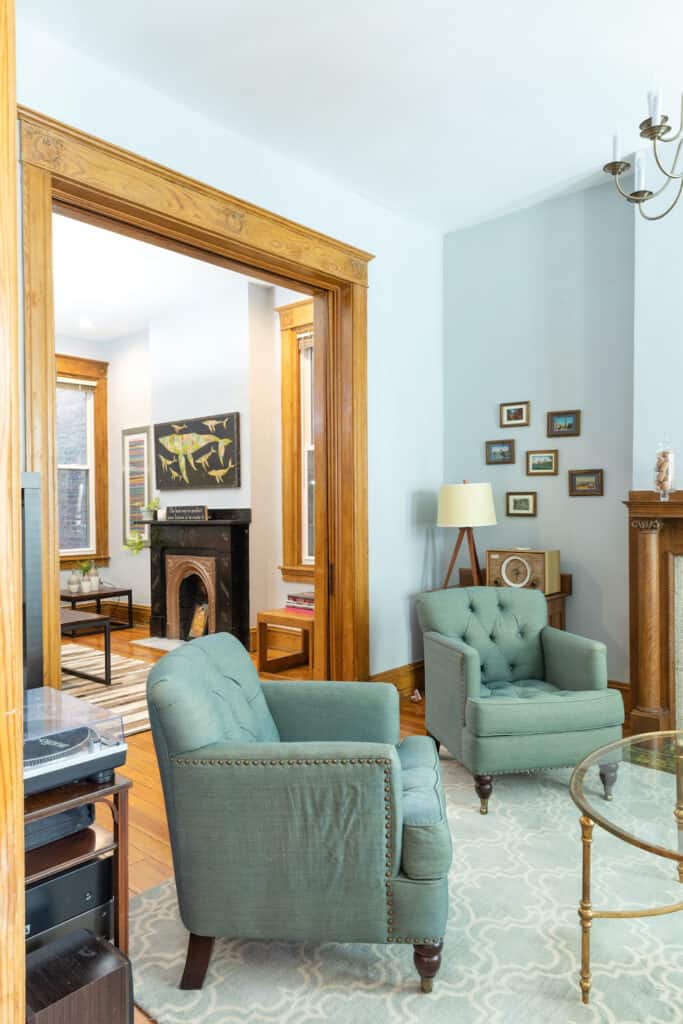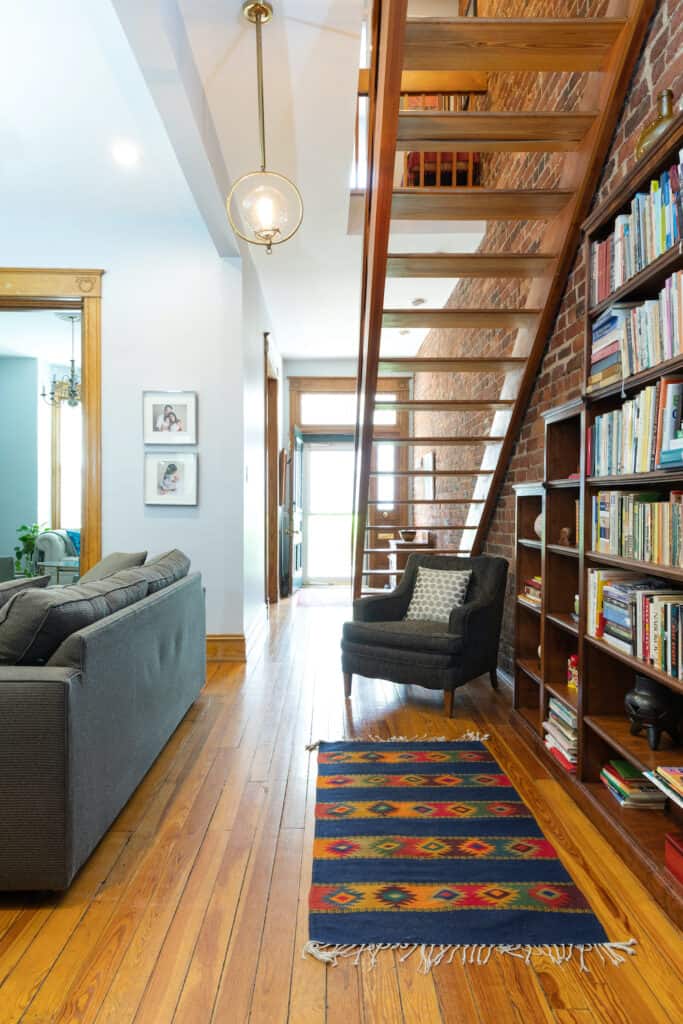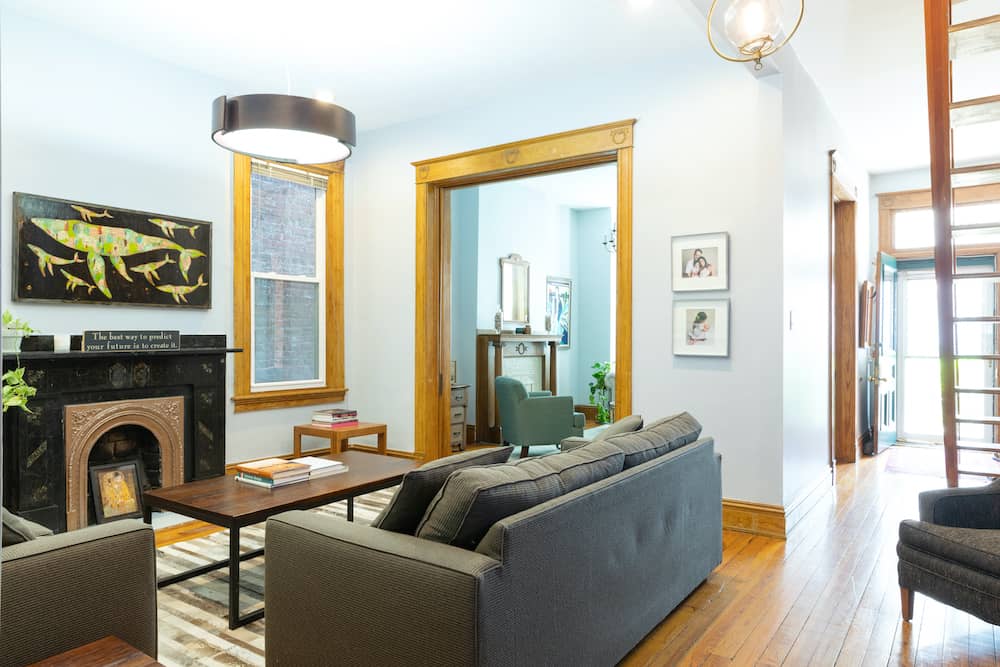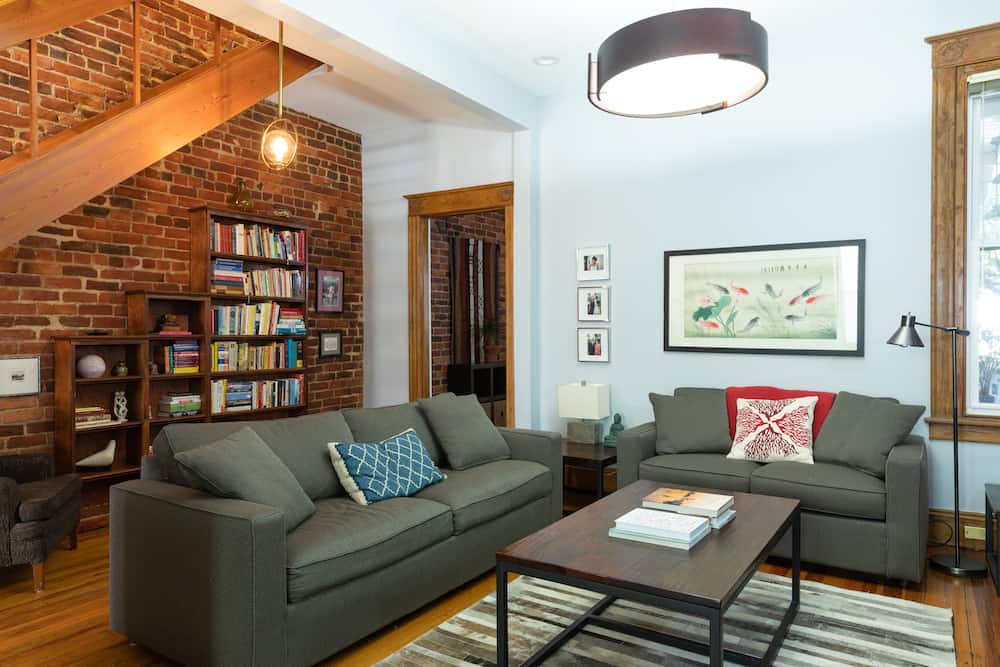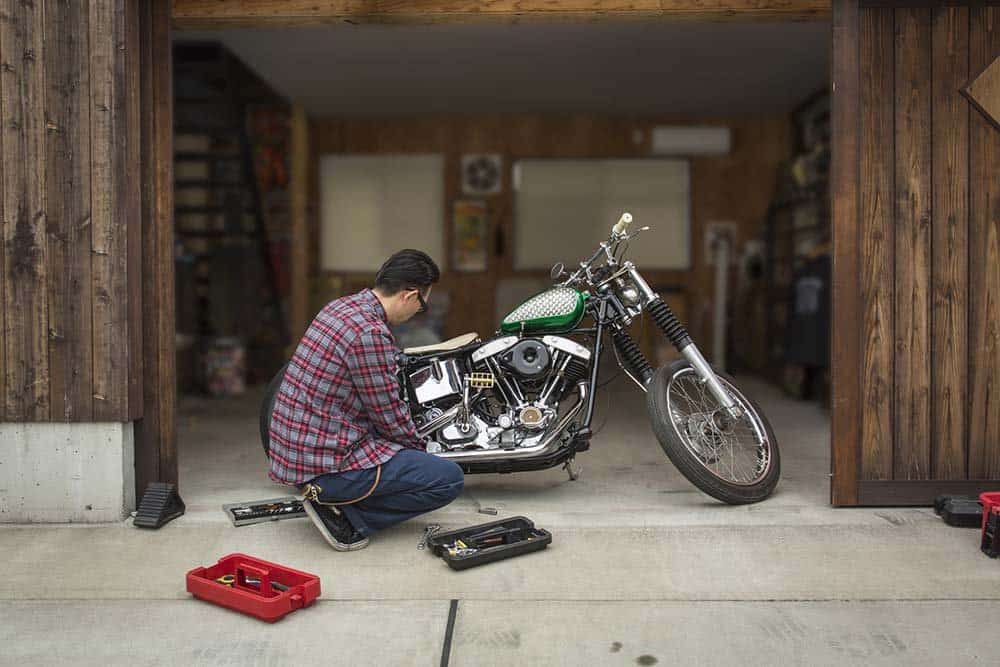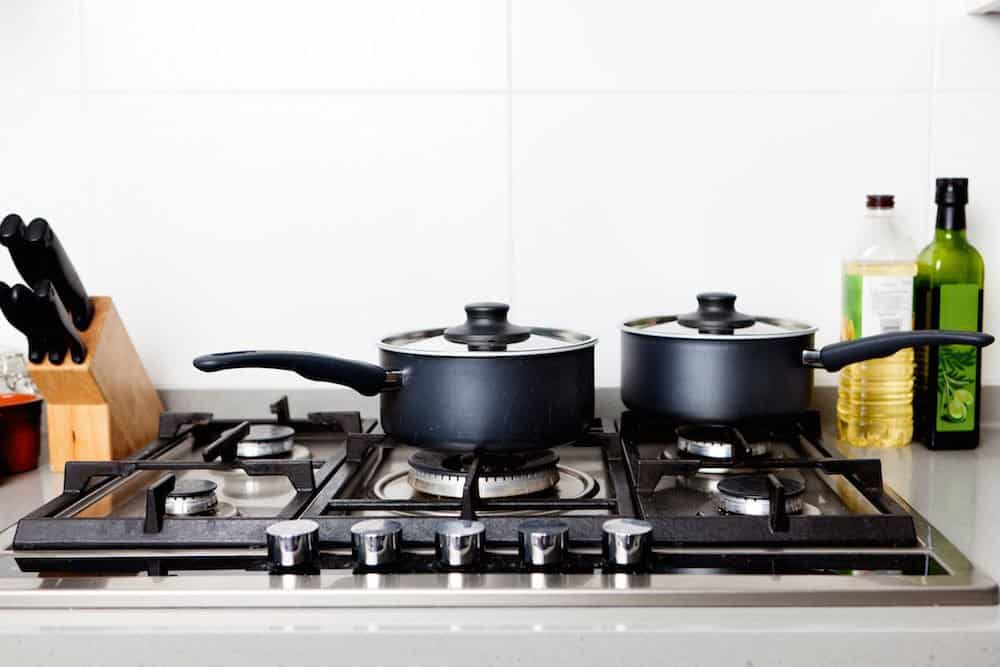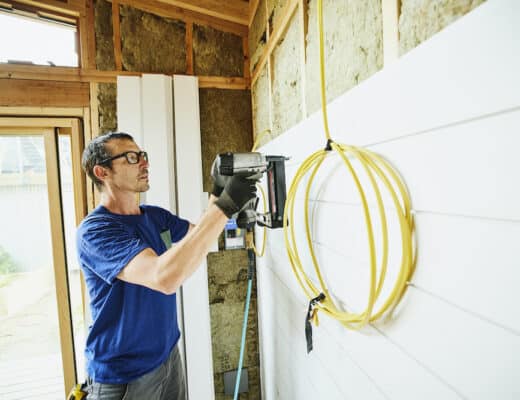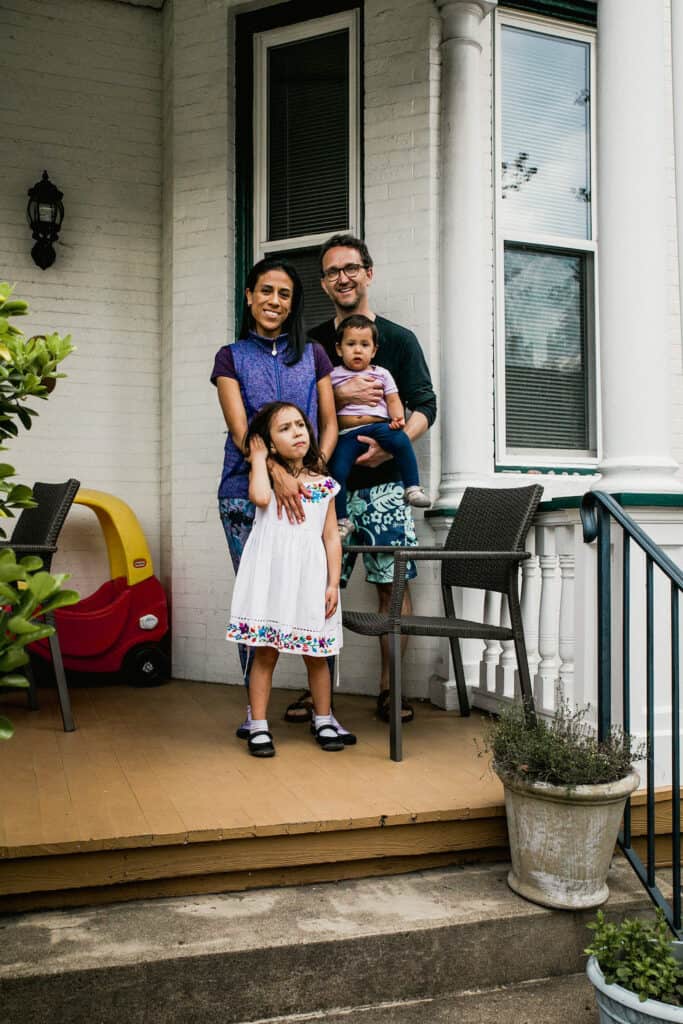
My friend Joe Kutchera has graciously shared the renovation process of his home in Richmond, VA. We met while working at This Old House, and I’m honored to share his “old house” journey. Enjoy!
When we moved into our historic row house in The Fan district in Richmond, Virginia, the first thing I did was hang a plaque I inherited from my Auntie Barbara, that read–“God made a lot of days so that you would not try to do everything at once.”
I treasure that plaque for spiritual and practical reasons. My Auntie Barbara was a Catholic nun who taught writing and English literature at Clarke College (now Clarke University) and later taught poetry and writing in the Milwaukee County Jail.
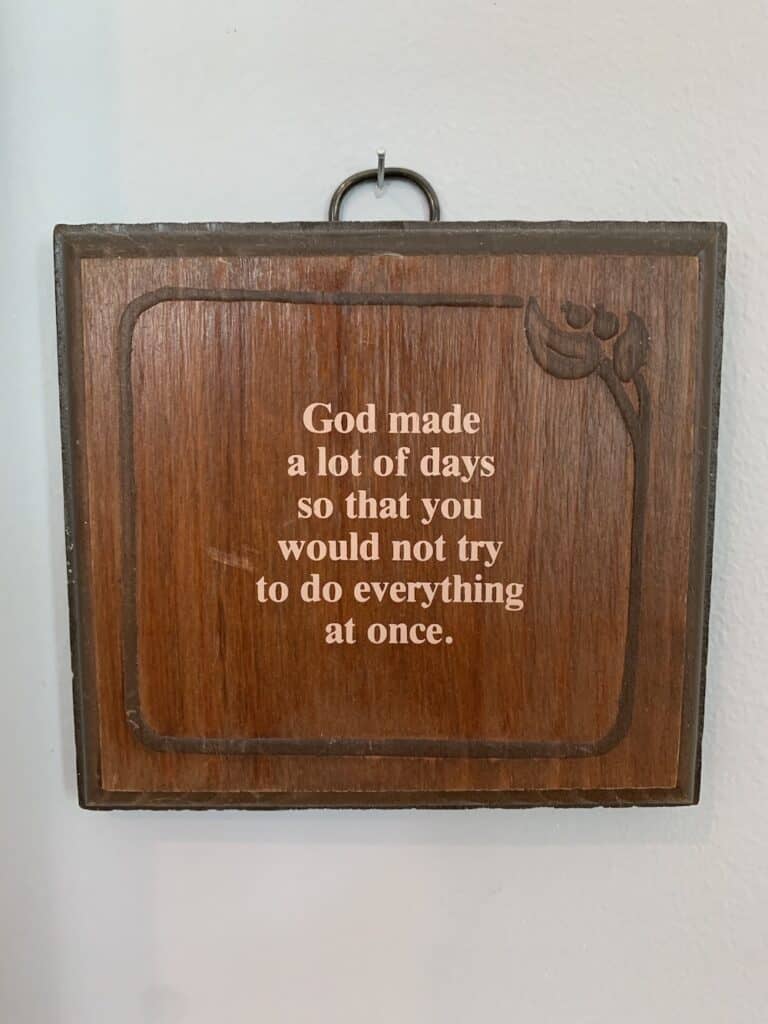
The plaque reminds me of her but also to take life one day at a time, a message that couldn’t be more appropriate than when renovating a home, especially with my type-A personality. And with our old house, the list of items to upgrade or fix seemed never-ending.
God made a lot of days so that you could not try to do everything at once.
My wife, Lulu, and I moved into our house as newlyweds eight years ago. And we recently moved out with two little girls who learned to walk up and down our beautiful, yet treacherous, open staircase. I’ve learned how much planning and work it takes to renovate and maintain an old house.
But in doing a little bit every day, every month (with a handful of major projects along the way), I now realize how much we have accomplished. I’ve documented our most significant house projects below.
Removal of Robert E. Lee Plaque
One of the smallest, yet most significant, changes we made to the house featured another plaque, but this one on the outside, just to the right of our front entrance. The statue of Confederate General Robert E. Lee appears at the center of the metal plaque, below which appears the year the house was built, which in our case was 1905. The image references the Lee statue, which is only three blocks from our house on nearby Monument Avenue.
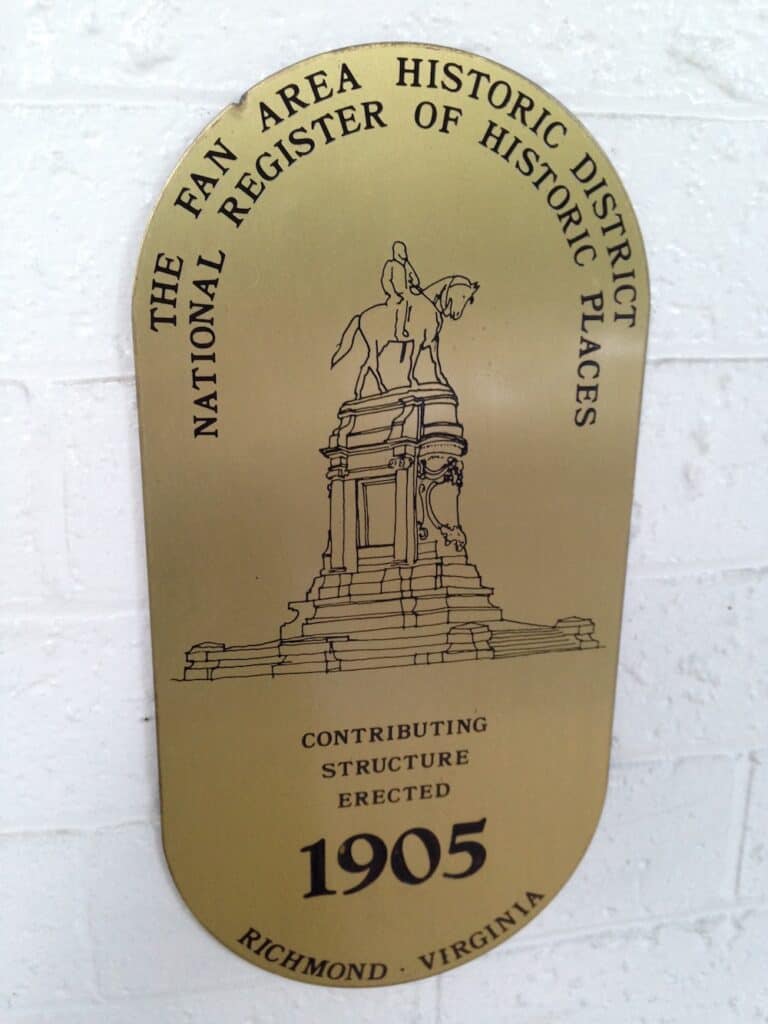
A majority of houses in The Fan have these customized plaques near their entrance, documenting the year each was erected. Our plaque stayed up until the George Floyd protests of 2020 at which time, we decided to take it down.
Thousands of #BlackLivesMatter protesters gathered around Lee and all of the Confederate statues on Monument Avenue that summer, covering them with graffiti. Later, The New York Times ranked the Robert E. Lee statue, covered in a summer’s worth of protest graffiti, at the top of its list of 25 Most Influential Works of American Protest Art Since World War II.
While all of that was going on, we realized, if we want peace on the inside of our house, why hang a symbol of war and racism on the outside? So, we removed it.
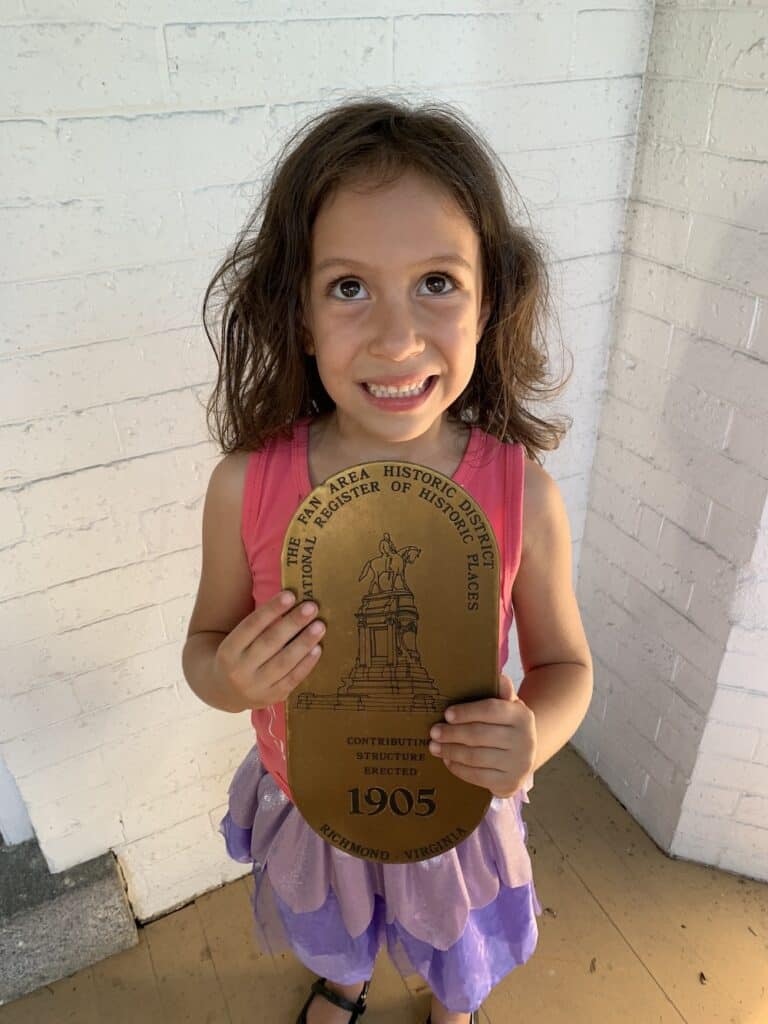
Dani and I even appeared on the local NBC affiliate, talking about the “Push to change historic markers with Confederate image on Fan District homes.”
Richmond finally took action and this week the statue of Robert E. Lee was removed from its pedestal on Monument Avenue. We’d call that progress.
Revised Historic Marker
Today, the Fan Women’s Club, which produces the plaques, no longer features Robert E. Lee. Instead, a stylized fan appears at the center around which reads, “The Fan Area Historic District. National Register of Historic Places. Contributing Structure Erected in [the year the house was built]. Richmond, Virginia.”
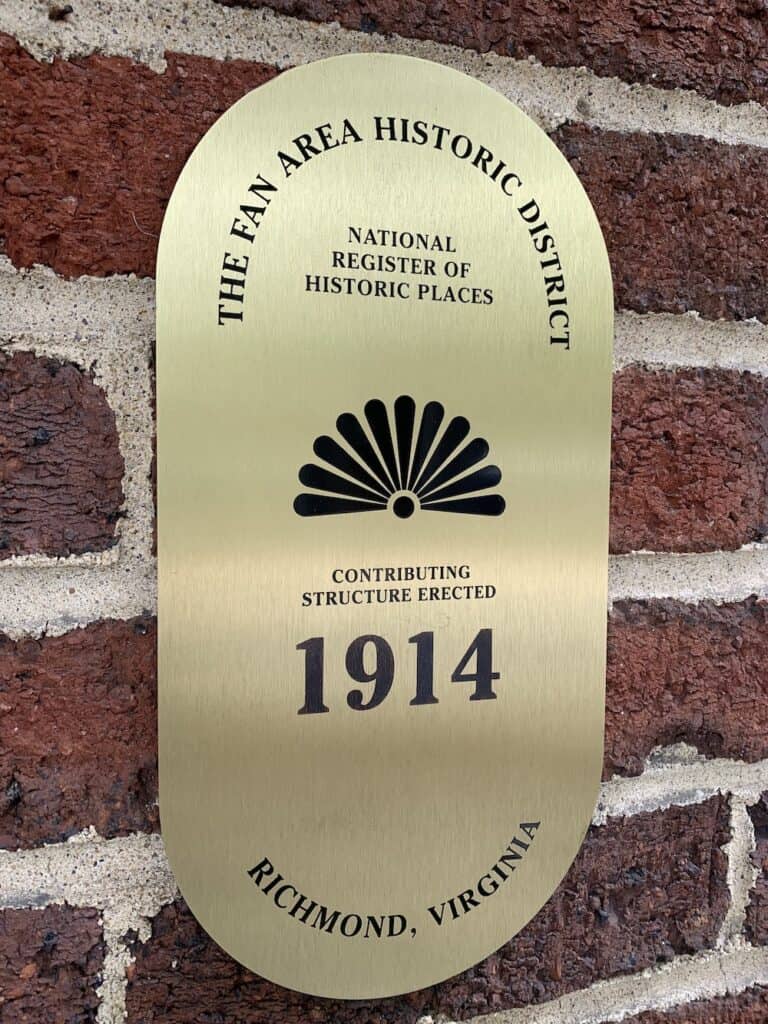
Our neighborhood is called “The Fan” because when you look at the streets from an aerial view or on a map, the streets look like a fan. Removing the plaque ended up being our final feng shui adjustment.
Lessons in Lighting and Feng Shui
I previously wrote about moving into our “new” old house and our renovation process on Charles & Hudson in two articles. In the first, Lessons in Lighting and Feng Shui, I described how we utilized feng shui to maximize positive energy and improve the lighting. And in the second, Let There Be Light: Formulating Our Renovation Plan, I outlined how we added lighting to nearly every room and even on the deck outside.
Following are “before” photos from when we first bought the house in 2013 alongside “after” photos, as captured by the talented Kim Frost, in preparation for selling our house in April 2021.
Office Transformed into a Bedroom
Our back bedroom, on the second floor, saw some of the most dramatic cosmetic changes. It previously served as an office and TV room for Dr. Charles Swezey, professor emeritus of Christian Ethics at Union Presbyterian Seminary.
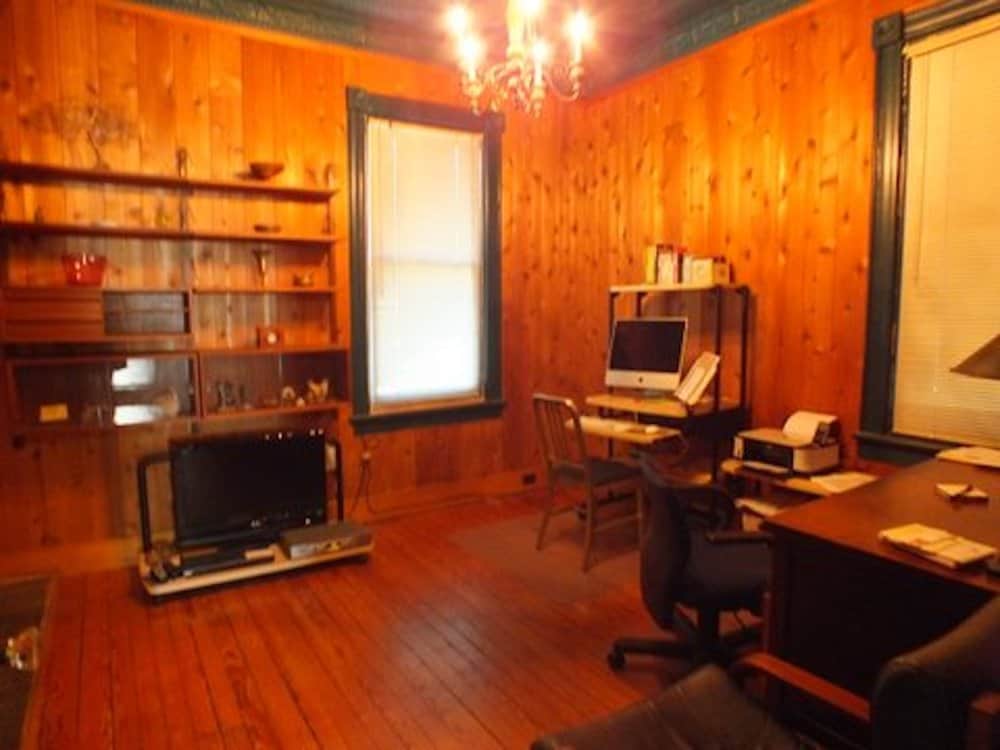
It had unstained paneled wood with dark green stamped tin ceiling tiles.
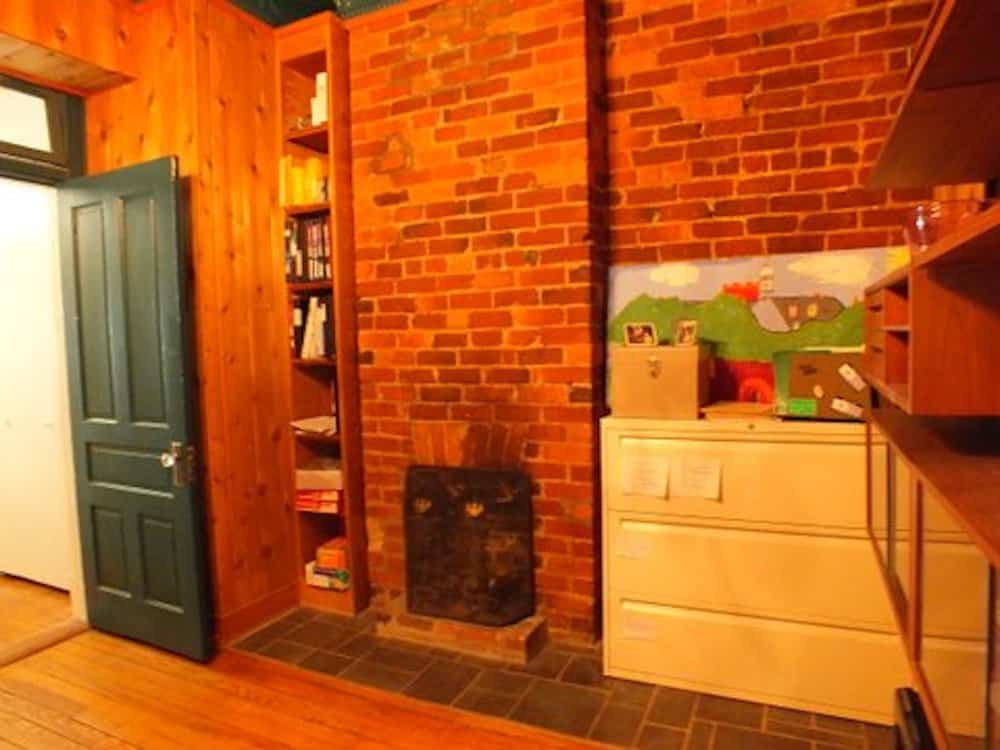
We repaired the brick fireplace wall, re-tuckpointing the mortar, and painted the tin ceiling white and walls a cream color. Plus, we replaced the masculine, metal-and-wood chandelier with a more feminine glass one.
Located in the back of the house, without any street noise, it made sense to make this our girls’ bedroom. Plus, the window faces North, so less light comes in, making it better for sleeping in.
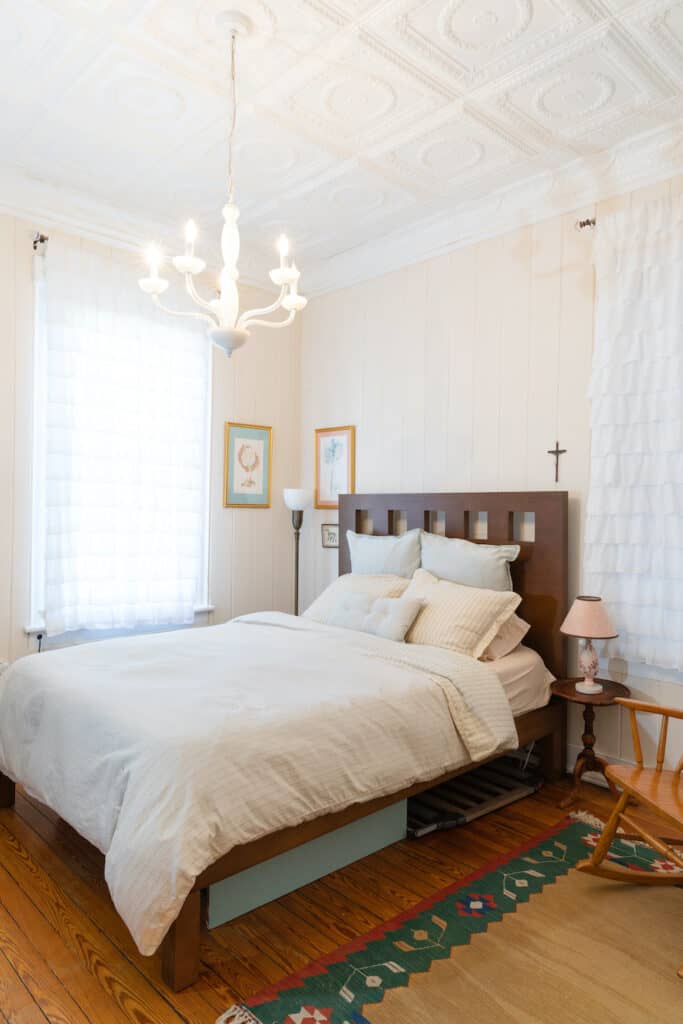
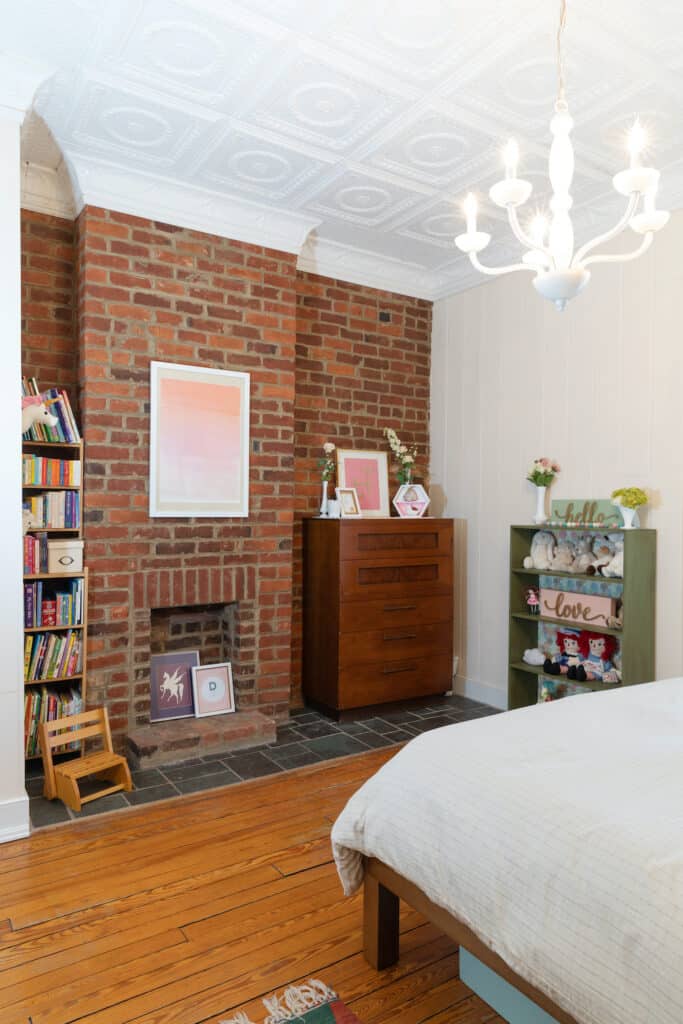
Hallway Laundry Area
Next, in the upstairs hallway, the closet opposite the bathroom had two folding doors that opened up to the washer, dryer and storage shelf.
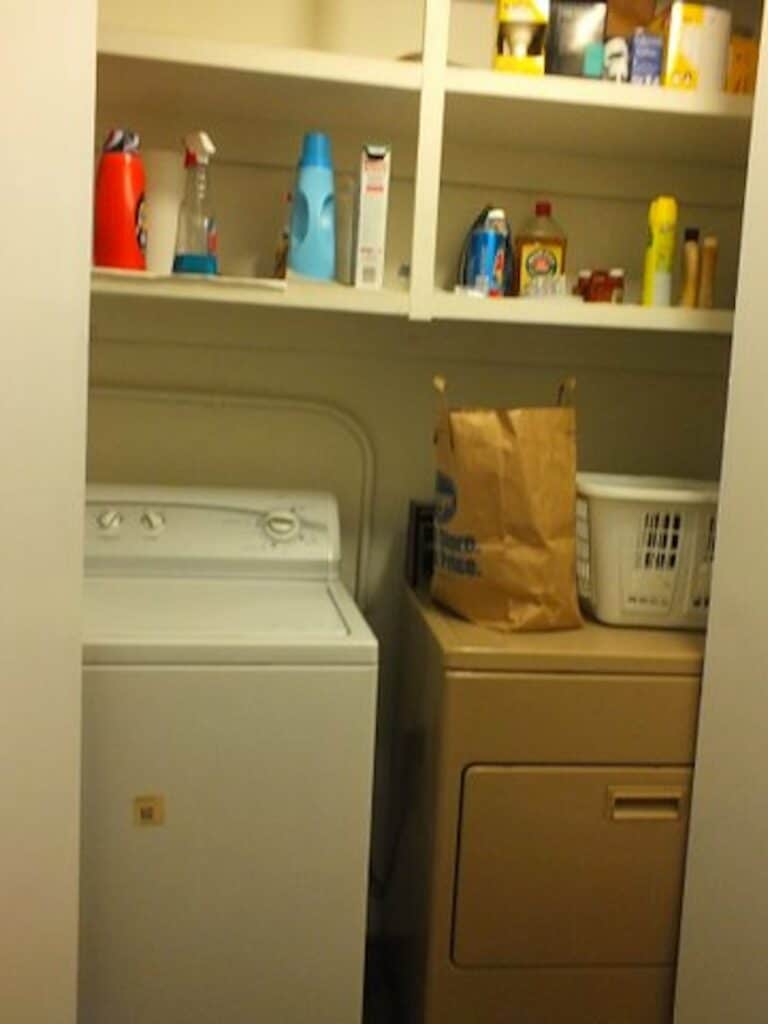
Three or four years ago, one door wore out, broke and suddenly fell off. We lived with one lonely door for years. And then, suddenly, in a rush to fix up our house prior to selling it, we realized that by removing the other door, repainting the closet’s interior and using tasteful storage bins, we could actually make an open closet and laundry area visually appealing.
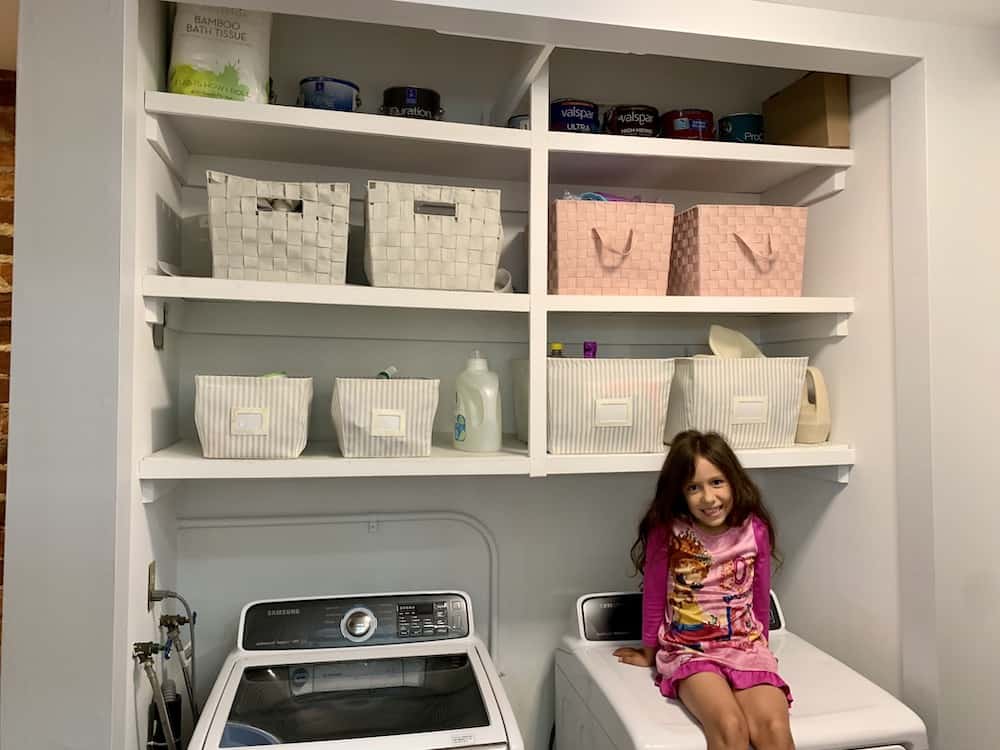
Necessity is the mother of invention. See our daughter, Dani, sitting on the clothes dryer in the refurbished hallway laundry area.
Front Bedroom Becomes the Office
We changed the front, master bedroom into an office so as to better utilize the energizing sunlight pouring in during working hours.
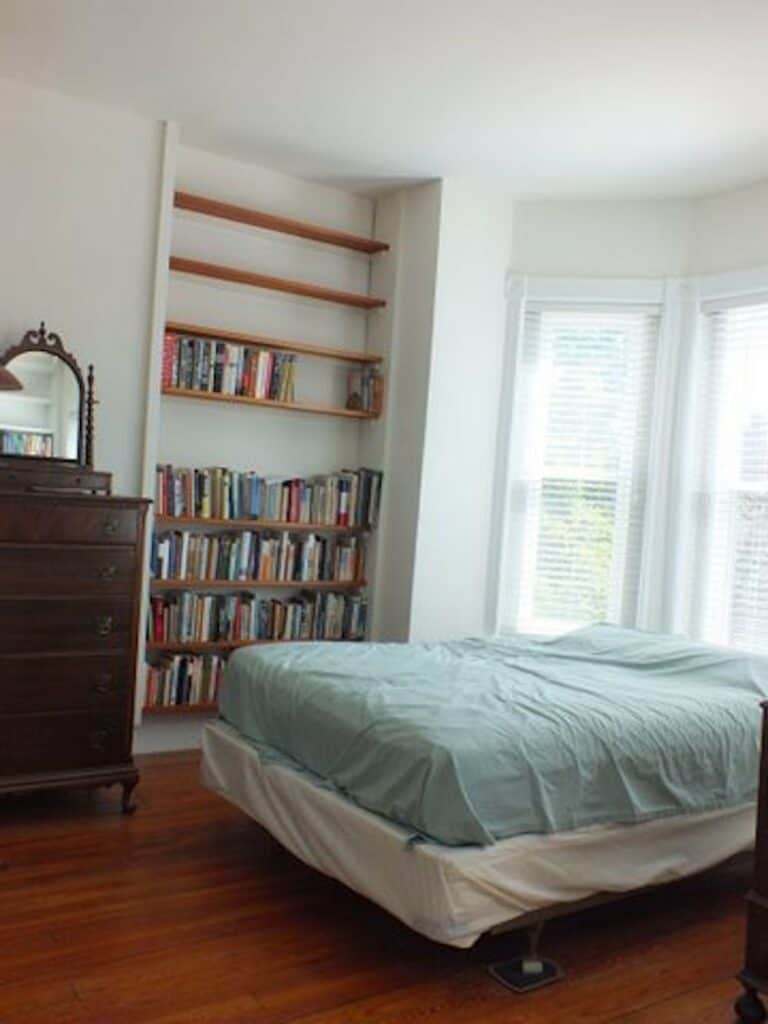
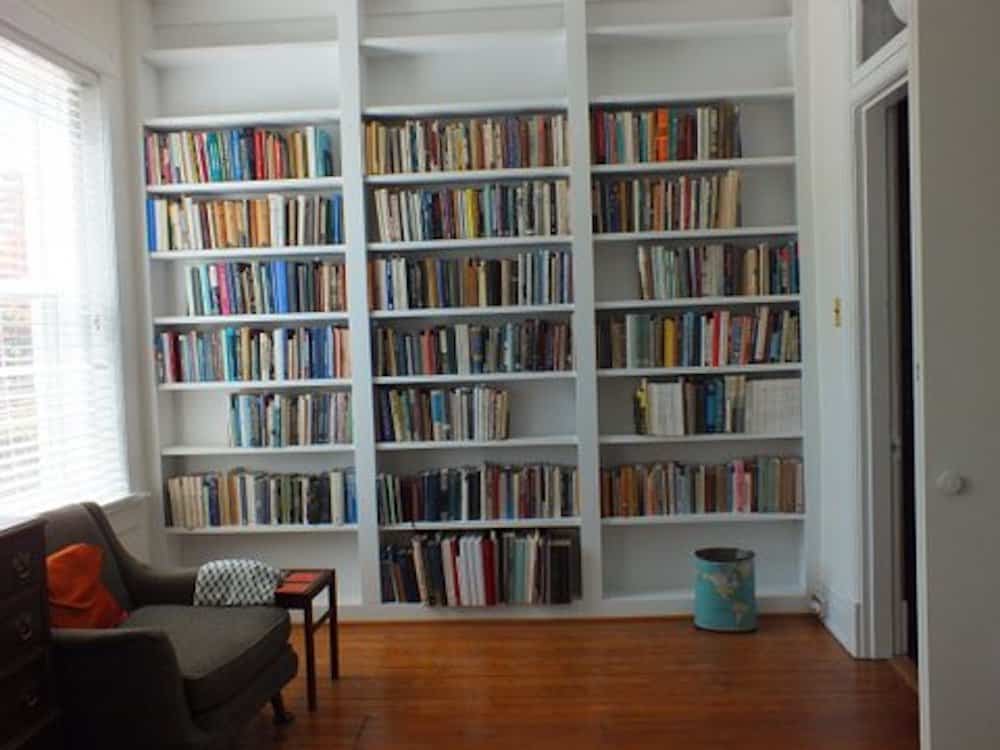
We loved the built-in bookcases where Professor Swezey stored his academic collection. We painted the room gray and placed the desk in an optimal, “power” position for feng shui, facing the door.
Other than that, we had a minimal amount of furniture. See “before” and “after” photos above and below. (We moved the master bedroom to the interior, middle bedroom as that room remained dark later into the morning…much better for tired parents who want to sleep in!)
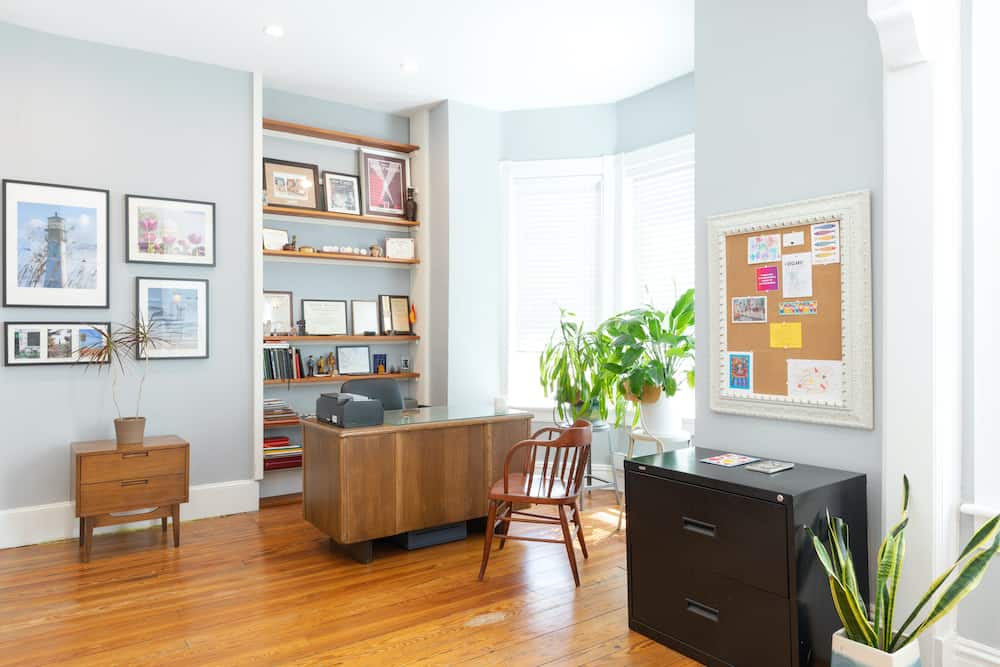
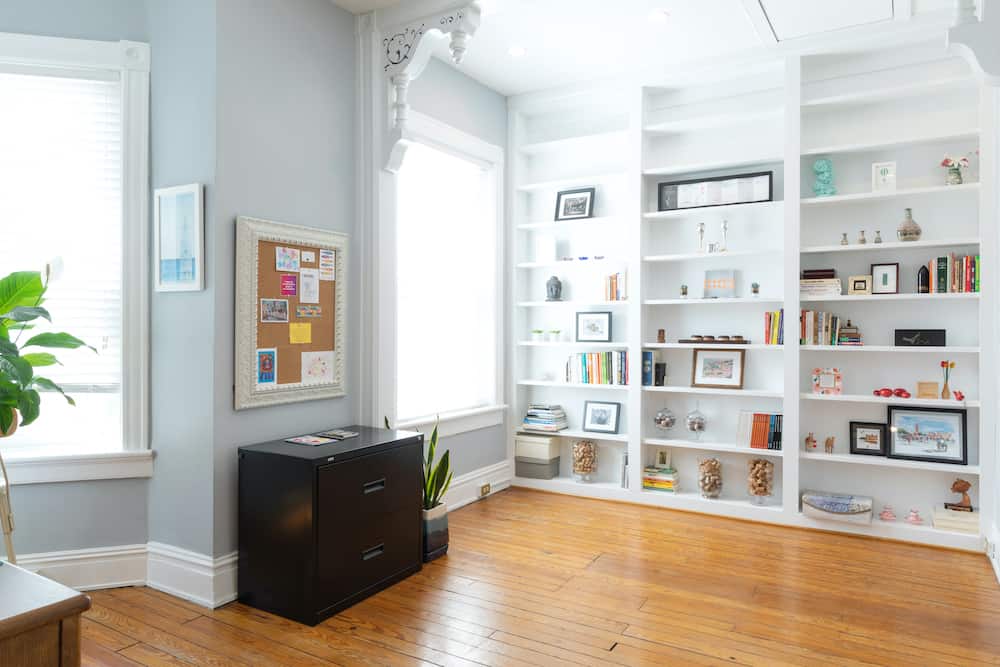
New Lighting in the Front Parlor and Living Room
Downstairs we added a traditional chandelier in the front parlor and a modern hanging lamp in the living/TV room as well as four recessed lights.
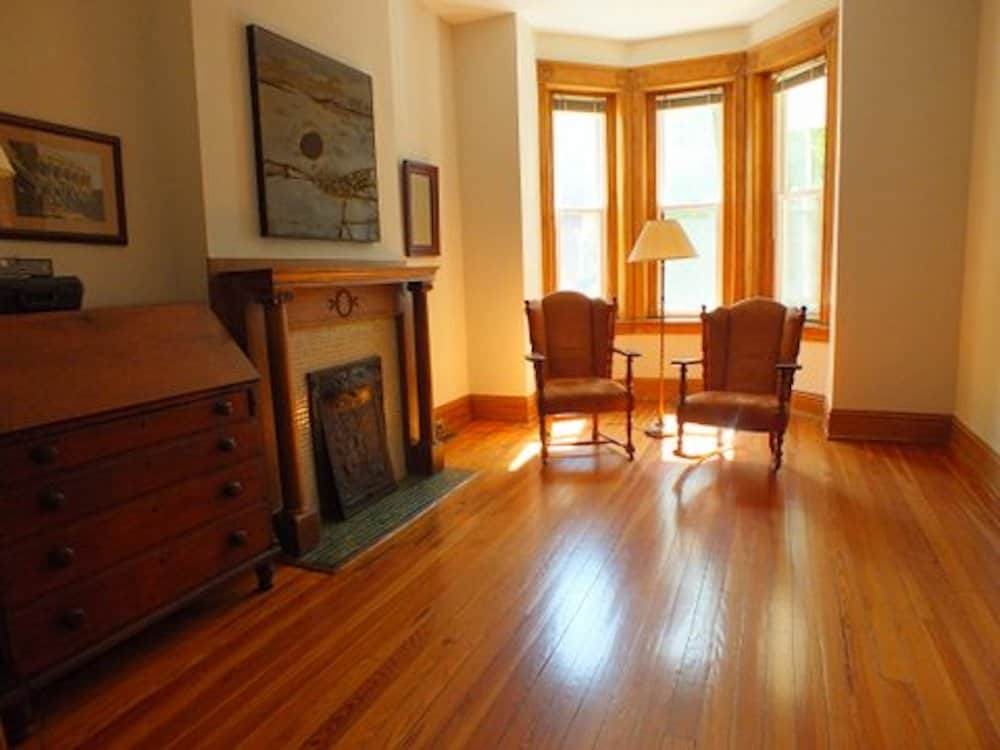
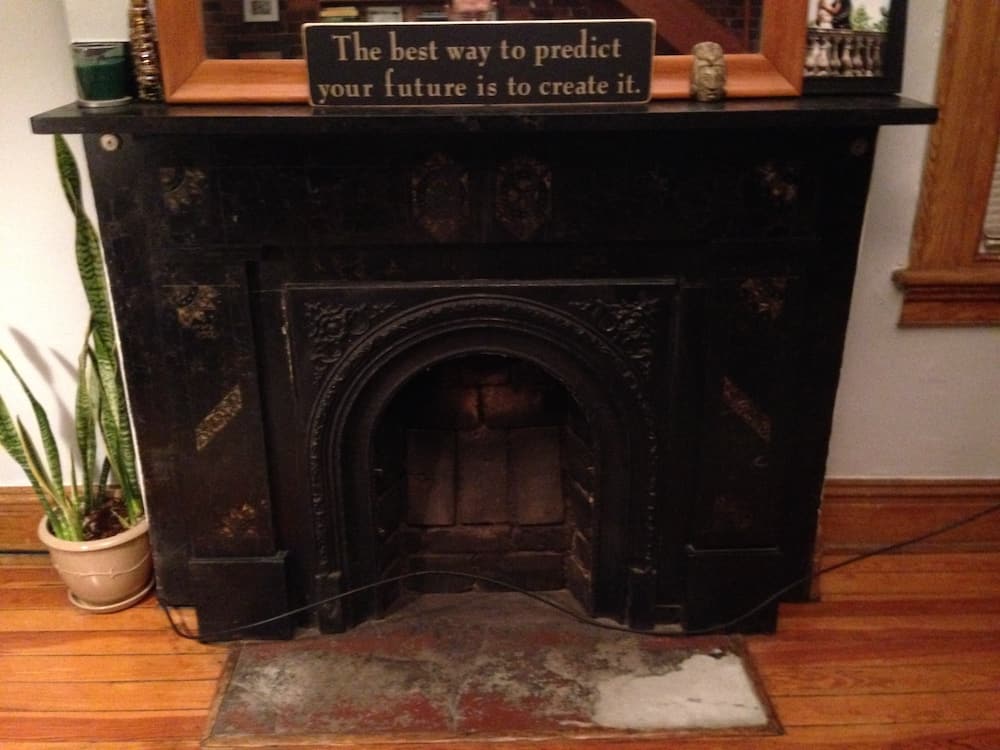
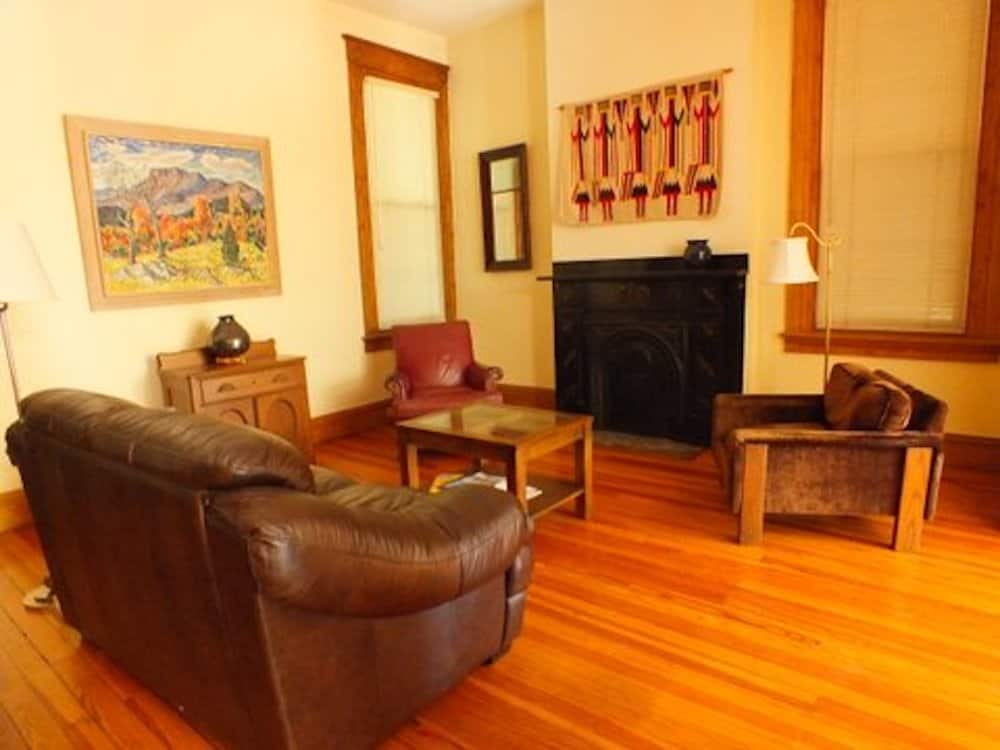
Previously, there hadn’t been any ceiling lights in either room. In addition, we painted the fireplace façades to spruce them up and in the living room, we painted the fireplace hearth a light gray, covering up the weathered stone directly in front of the firebox opening.
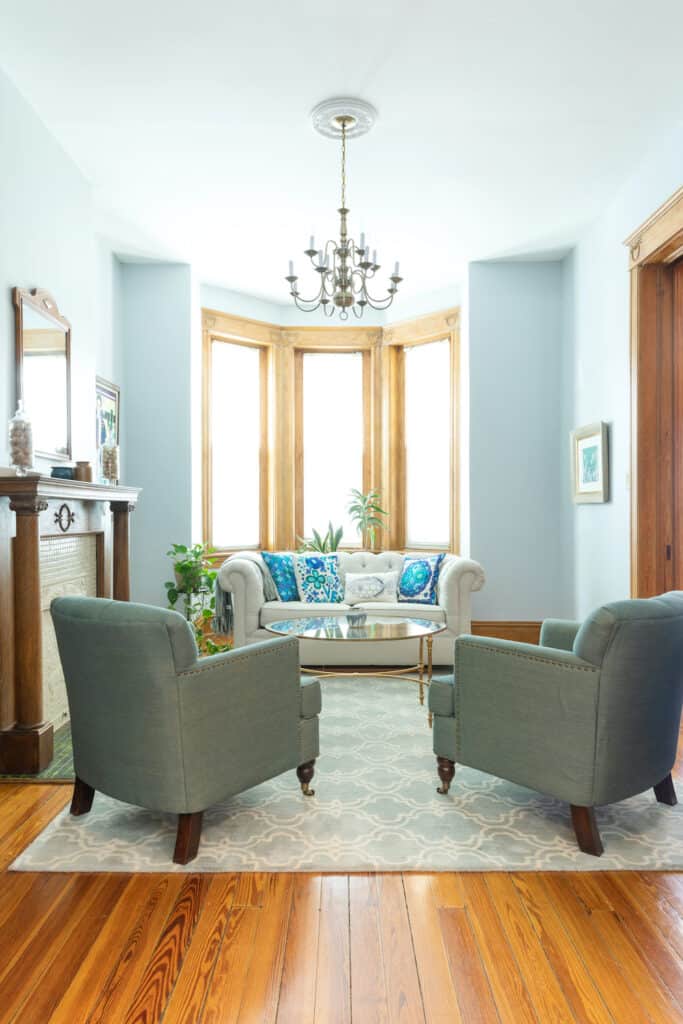
Professor Swezey informed me that the glass and brass, globe light fixture that extends from the ceiling in the first-floor hallway was purchased from the historic Jefferson Hotel when it underwent a redesign in the 1990s. Perhaps it was a part of the original hotel.
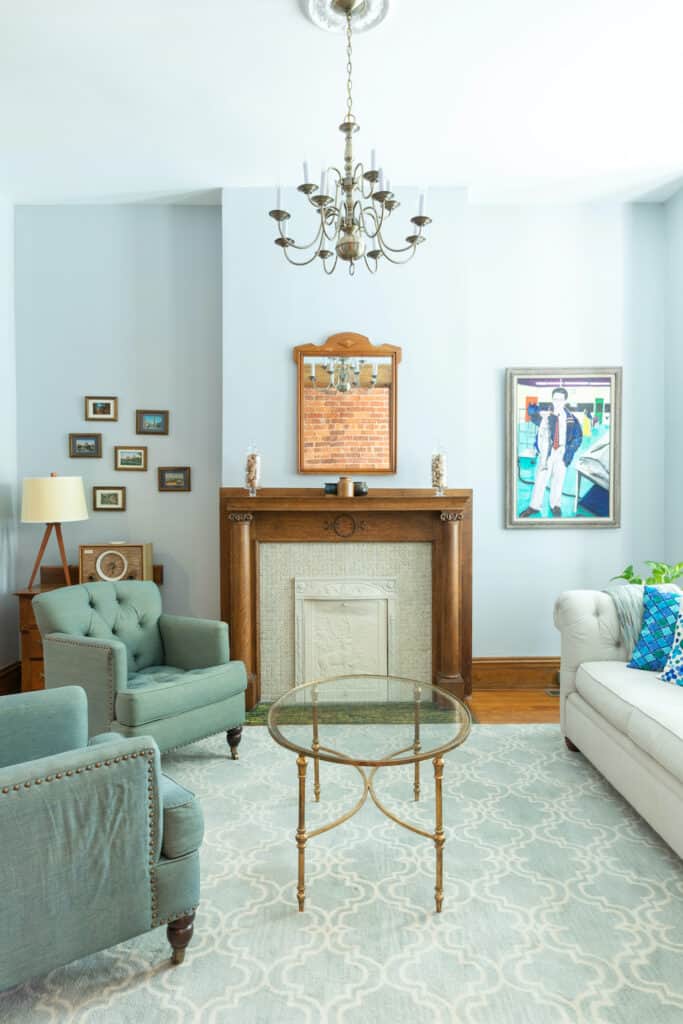
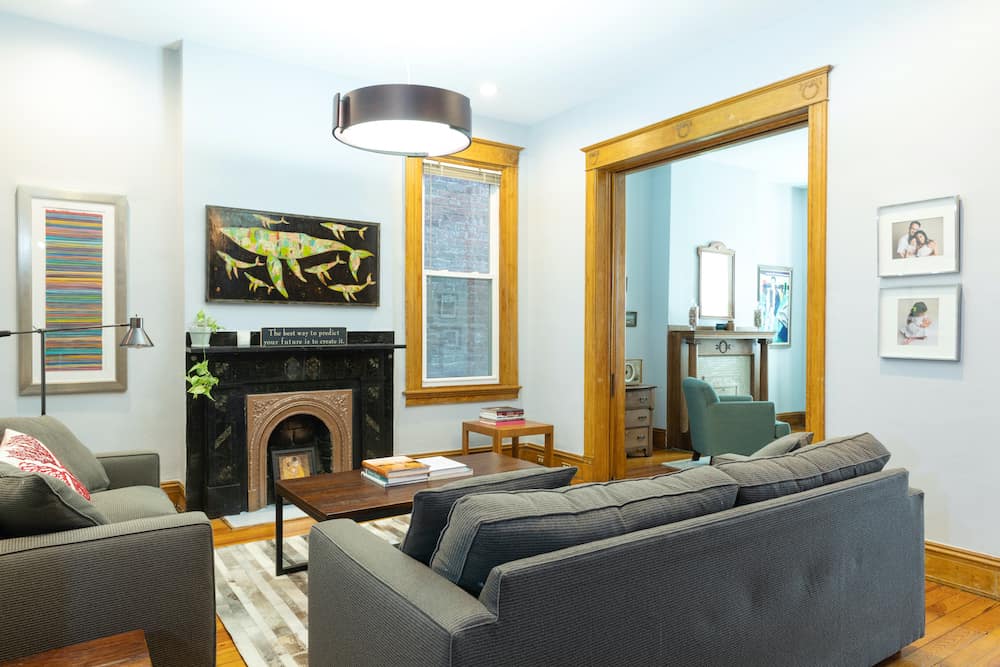
Our Largest Project: The Kitchen and Powder Room
We gutted and completely renovated our kitchen and powder room, our biggest project during our eight years living in our house.
When we moved in, the kitchen had a mismatched section of countertop alongside a shelf that was partially obscured by the countertop. And the bathroom door bumped against the refrigerator door when opened at the same time.
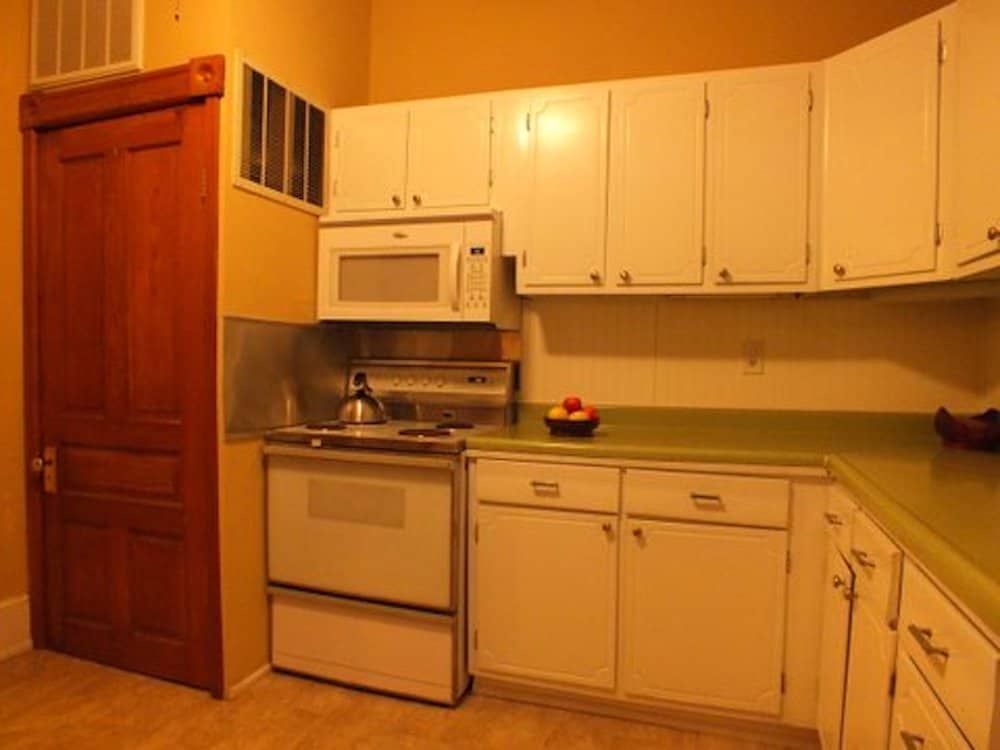
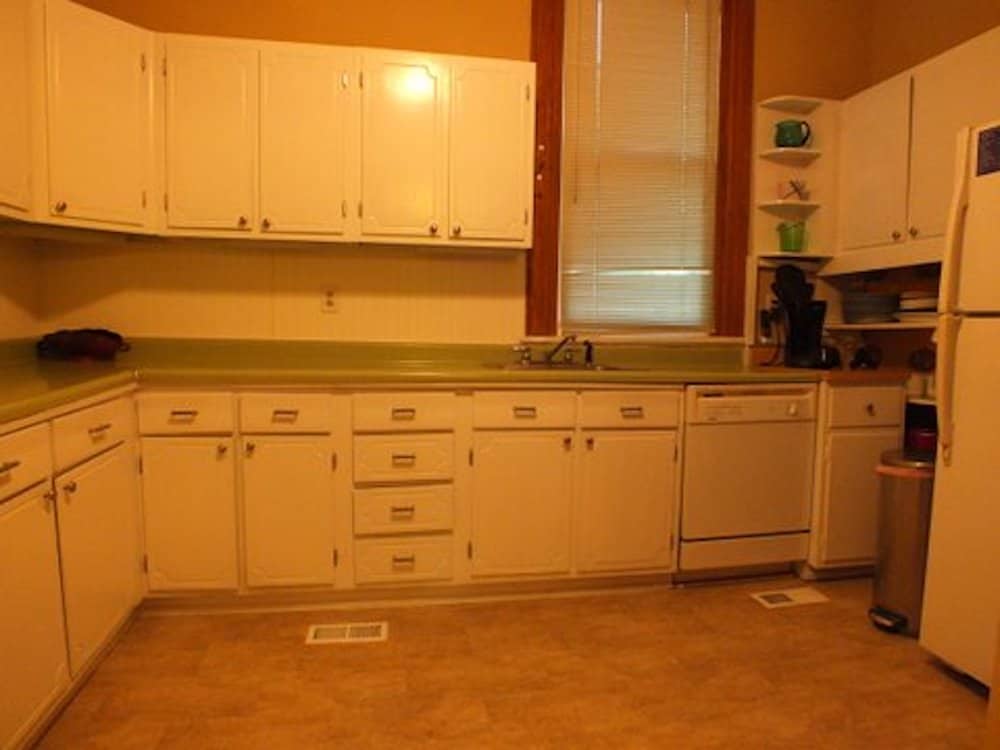
After gutting the old cabinets and appliances, we discovered some beautiful old wallpaper in the kitchen that surely went back a few generations. The wallpaper showed household items from another era: barrels, wheelbarrows, a wardrobe cabinet, a spinning wheel, a pot cooking over a fireplace.
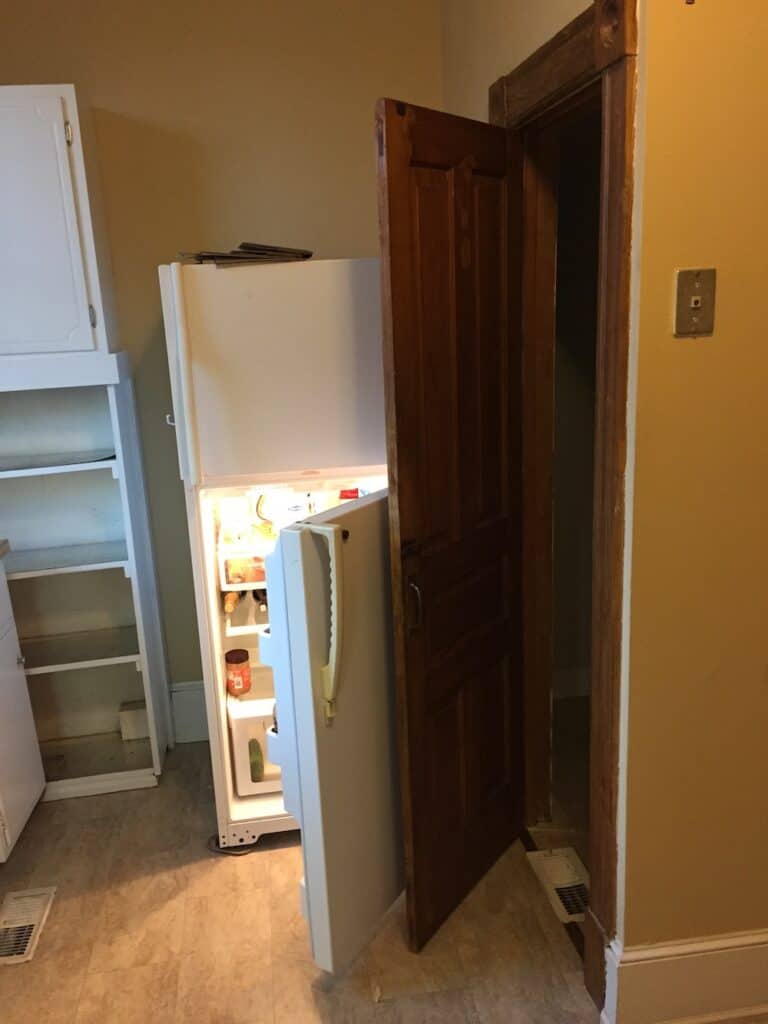
We didn’t want the powder room door to bump into the refrigerator, as it had previously, nor into any child or person. So, we changed the orientation of the powder room door to open next to the entrance between the kitchen and dining room.
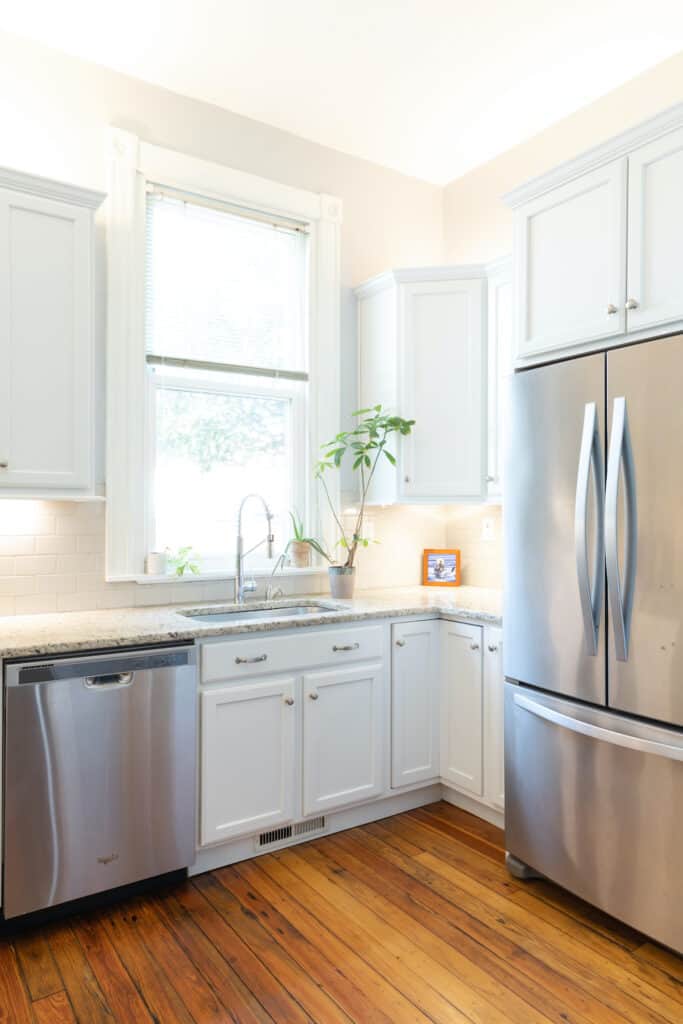
And just as importantly, instead of throwing away the bathroom door, we painted it white and repurposed it as a hidden, sliding door for the new powder room. And inside the powder room, we added a wall-to-wall mirror, which made it seem much more spacious than it actually was.
In the kitchen, we installed new white cabinets, gray subway tiles and granite countertops as well as stainless steel appliances.
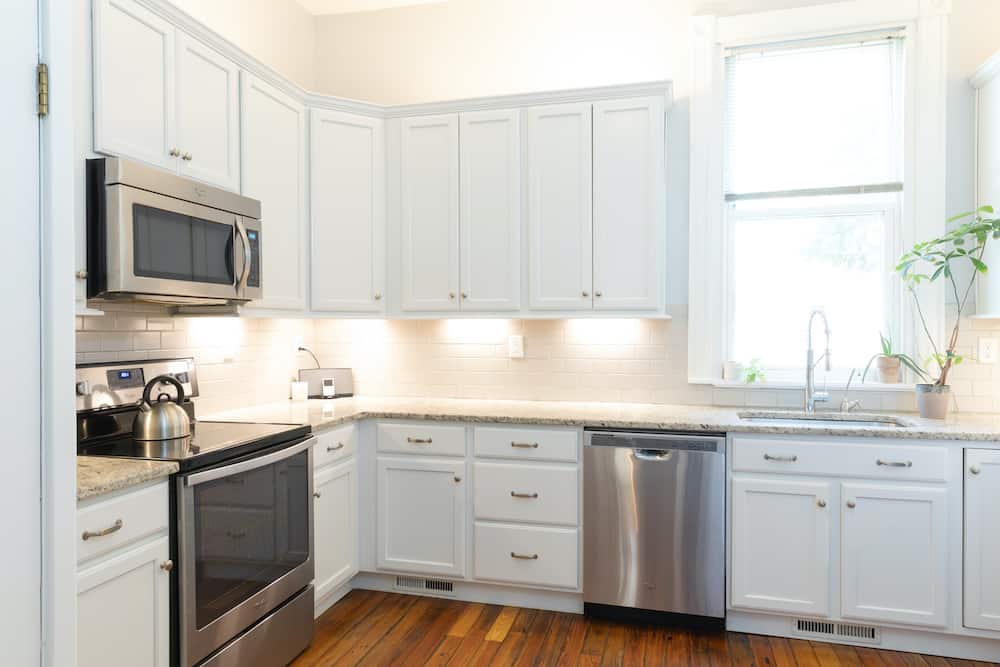
The new, indirect LEDs above and below the cabinets significantly improved the lighting in the kitchen. Plus, we moved the HVAC ducts, which had previously been on the floor, to underneath the new cabinets. (We learned the hard way that spilled drinks or food, unfortunately, find their way into floor ducts, which inspired us to make that change.)
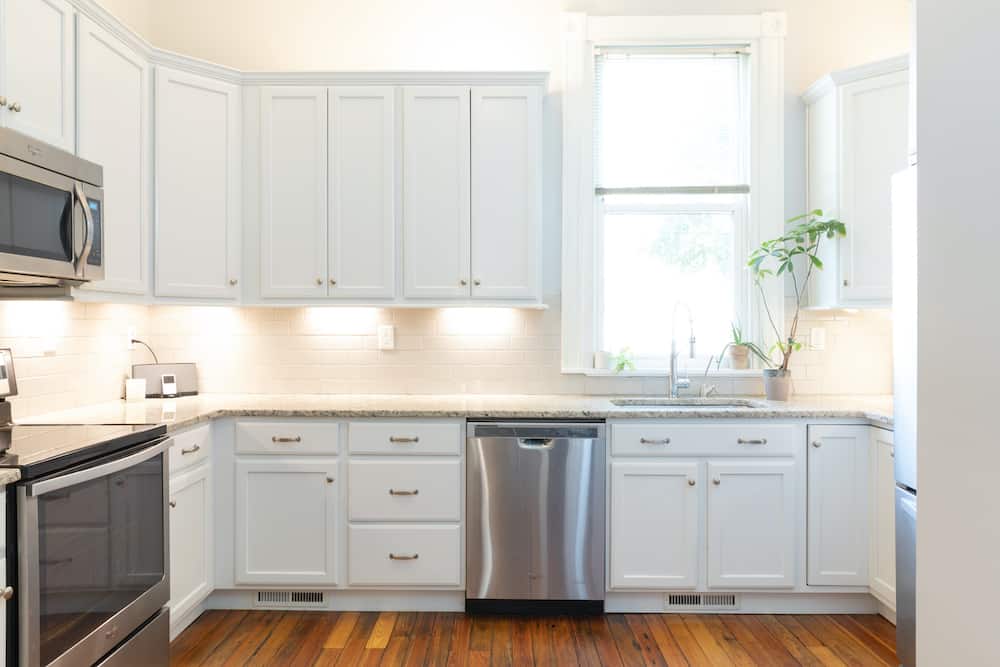
Refreshing Upstairs
The second-floor upstairs deck took on new life after we painted the floorboards gray and the banisters white, prior to which we repaired the exterior brick walls, re-tuckpointing the mortar.
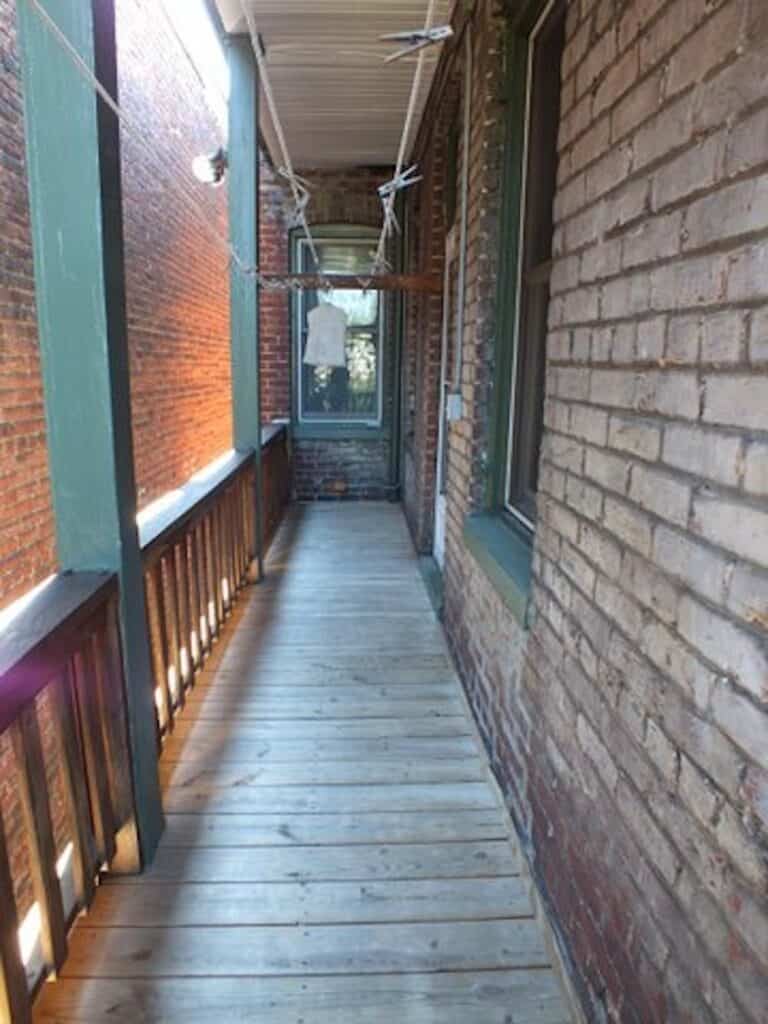
We painted the upstairs hallway gray and most importantly, replaced the faux sun lights with recessed LED lights, which significantly brightened up our top-of-the-staircase hallway.
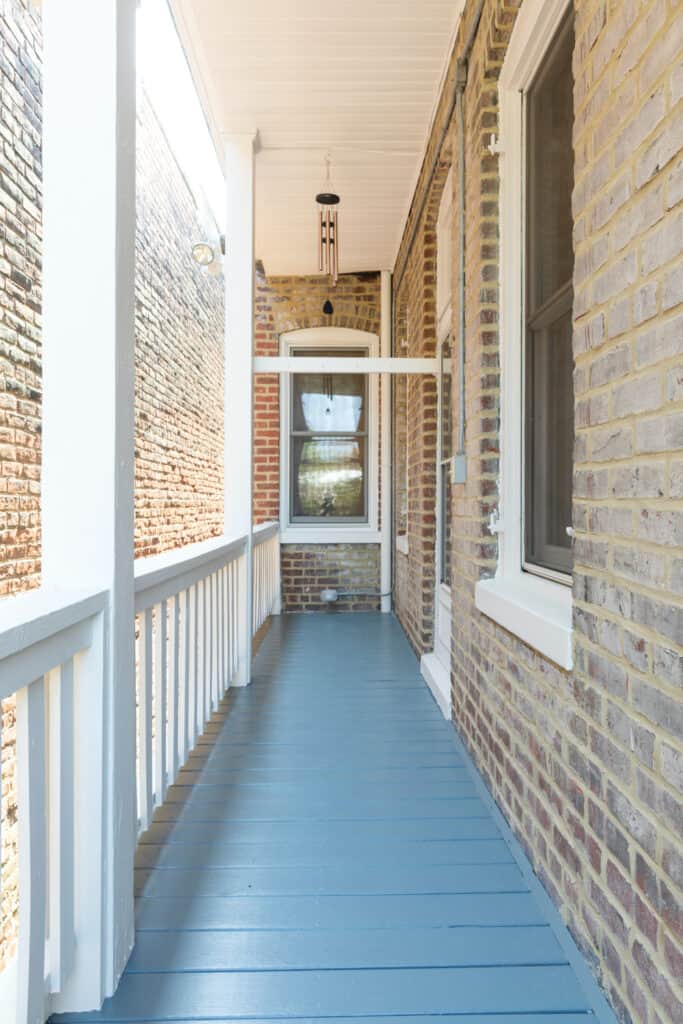
The Families Before Us
We kept in touch with Dr. Swezey and his wife over the years, even having them over for dinner once. I realized how maintaining a connection with the previous owners added meaning to all of the improvements we made to the house as if he and his family had passed a baton to us in a relay race.
And so, we improved the house, through all of our renovations, to a new level. See the Swezey family smiling on the front porch.
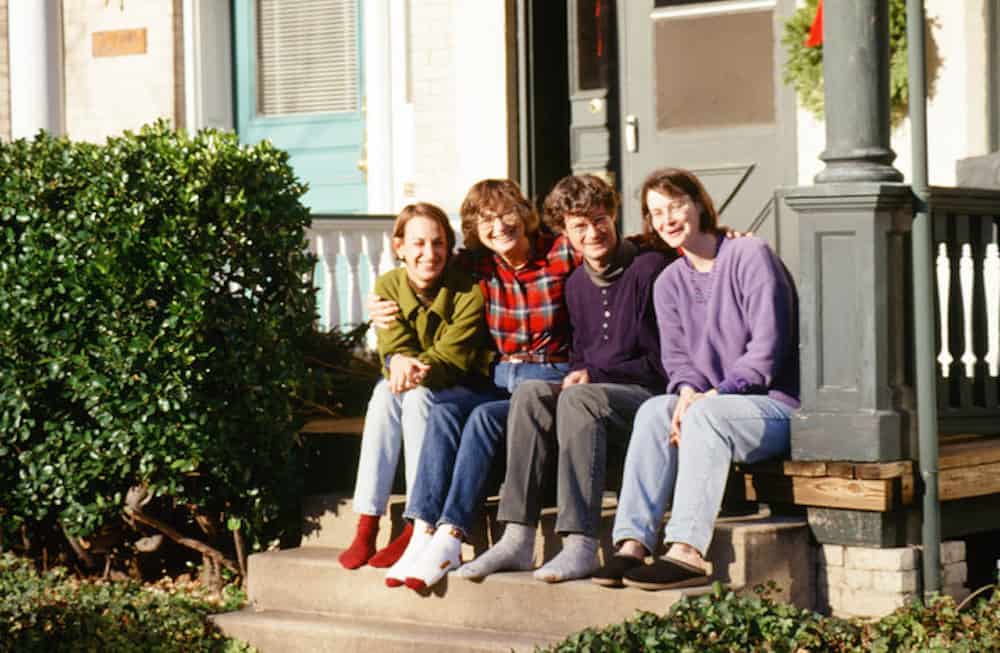
And a few years ago, prior to the pandemic, a car full of people drove up to and paused in front of our house. They all stared out at our porch, squinting to look at our address. They parked and got out of the car. I wondered, “Who are these people?”
The Williams family introduced themselves as having had lived in our house before the Swezeys. We gave them a tour and they recounted to us their fond memories of living in the house.
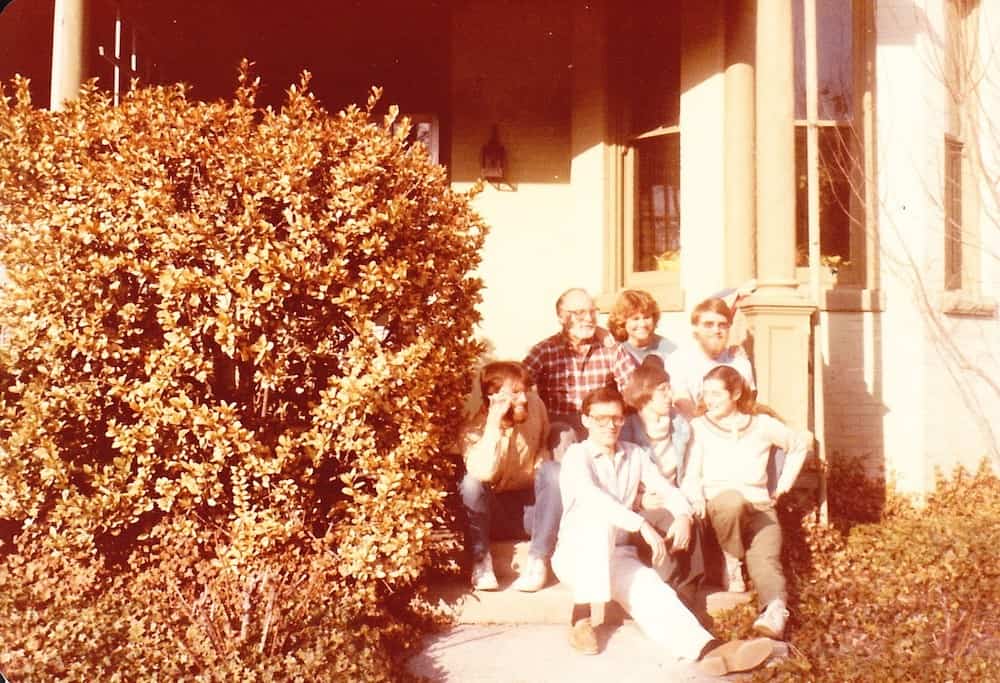
Thank goodness that “God made a lot of days so that you would not try to do everything at once.” It took us eight years to renovate the material elements of our house, all while raising two little girls. And during that process, we happily got to know the families that lived there previously as well as a bit of our home’s history.
Richmond Renovation Photos
